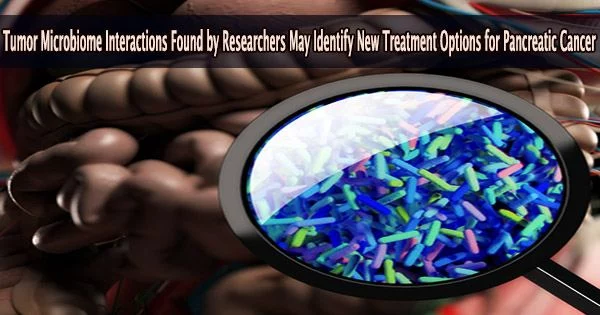Researchers from RWJBarnabas Health and Rutgers Cancer Institute of New Jersey, the state’s top cancer facility and the only Comprehensive Cancer Center designated by the National Cancer Institute, examined the microbiome of pancreatic tumors and discovered specific microorganisms at single-cell resolution that are connected to inflammation and poor survival.
The fourth-leading cause of cancer death for both men and women in the United States, pancreatic cancer, may have new targets thanks to these microbes, say the researchers. The findings are published in the online version of Cancer Cell.
Microbes are living things that are too small to be seen with the naked eye. Our bodies contain more bacteria than there are human cells, and they can be found in organs like the pancreas, which was once thought to be microbe-free.
Subhajyoti De, PhD, principal investigator at Rutgers Cancer Institute and senior author of the study along with graduate student Bassel Ghaddar, a student in the MD/PhD program at Rutgers Robert Wood Johnson Medical School, began exploring if there are microbes residing in pancreatic tumors, and if they have consequences for cancer progression or treatment.
However, it is challenging to examine bacteria in tumors because each patient is unique and because microbial imprints are too subtle to reliably identify.
Our observations provide a new view about why pancreatic cancers are so difficult to treat. But better understanding these interactions may identify new approaches for therapies.
Dr. Blaser
To explore further, the researchers teamed up with Martin Blaser, MD, Henry Rutgers Chair of the Human Microbiome at Rutgers University and microbiome expert. The investigators developed a genomic approach called SAHMI (Single-cell analysis of Host-Microbiome Interactions) to identify microorganisms associated with individual human cells. Using sophisticated tools, they were able to sort through millions of RNA sequences and determine which ones most likely represented human genes and which ones were microbial in origin.
“This new technique allowed us to identify tumor-associated microbes and measure the activity of the host cells at the same time, which is a significant technical advance, and the results were stunning,” notes Dr. De, who is also an associate professor of cancer systems biology at Rutgers Robert Wood Johnson Medical School.
The scientists examined two distinct sets of pancreatic tumors and discovered that some of them had bacteria that were almost entirely absent in healthy pancreatic tissues and were connected with particular cell types within the tumor. These bacteria were primarily found inside tumor cells, and their frequency corresponded with the actions of cells that were involved in cancer. The precise signatures of the bacteria that were discovered indicated a bad prognosis and a particularly aggressive cancer growth.
The presence of microbial traces inside the pancreatic tumors made it unclear whether the immune cells there were fighting the cancer or the bugs. According to the study’s findings, the immune system was mostly attacking the microorganisms in the tumor rather than the cancer cells.
“Our observations provide a new view about why pancreatic cancers are so difficult to treat,” notes Dr. Blaser, who is also a research member at Rutgers Cancer Institute and professor of epidemiology and biostatistics at Rutgers School of Public Health. “But better understanding these interactions may identify new approaches for therapies.”
Along with Drs. De, Ghaddar, and Blaser, other investigators include: Antara Biswas, PhD, Center for Systems and Computational Biology, Rutgers Cancer Institute; Chris Harris, PhD, Department of Surgery, University of Rochester Medical Center; M. Bishr Omary, PhD, Center for Advanced Biotechnology and Medicine, Rutgers University and Darren R. Carpizo, MD, PhD, Department of Surgery, University of Rochester Medical Center.





